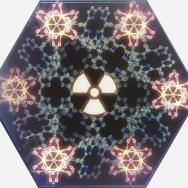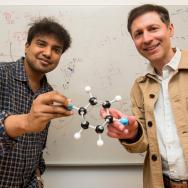Being able to build complicated molecules has allowed us to reshape the world—from fertilizers and cancer drugs to plastics and rubber. But it’s a delicate process, full of pitfalls.
In a new paper published in Nature Chemistry, scientists from the University of Chicago laid out a new approach that streamlines the process and expands the possibilities for building a class of molecules used in pharmaceutics, agriculture and materials.
The art of making molecules relies on coaxing the ingredients to attach to the right places in the right order. There are numerous possible sites where molecules can attach to each other; if you mix chemicals together without precautions, they could latch on wherever they happen to find a spot that fits, rather than where you want them to. It’s a bit like trying to build a Lego castle while all the blocks are trying to attach to one other.
Guangbin Dong, professor of chemistry, wanted to investigate better ways to build a useful class of molecules called arenes. These molecules can be bioactive—interacting with plants, animals and other life—which makes them useful in drug discovery and agricultural chemicals, among other areas. However, the most commonly used way to build them today is by using a process that allows us to build off of certain sites on the molecule, which makes it difficult to reach other sites. “A long-standing quest in organic chemistry has been to find a way to complement this process, which is called electrophilic aromatic substitution,” Dong said.
Dong and graduate student Jianchun Wang, the first author on the paper, found that they could use molecules called bridgehead-modified norbornenes, together with a palladium catalyst, to overcome this limitation. These norbornenes act as bridges so that chemists can guide the molecules to the right sites to attach.
“The previous method uses seven steps; this is just two,” Wang said.
“It should allow us to obtain unusual selectivity that has been hard to achieve,” Dong added.
The other authors on the paper were Renhe Li and Zhe Dong of UChicago and Peng Liu from the University of Pittsburgh.
Citation: Complementary site-selectivity in arene functionalization enabled by overcoming the ortho constraint in palladium/norbornene catalysis. Wang et al, Nature Chemistry, June 25, 2018. https://doi.org/10.1038/s41557-018-0074-z

